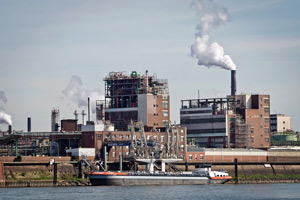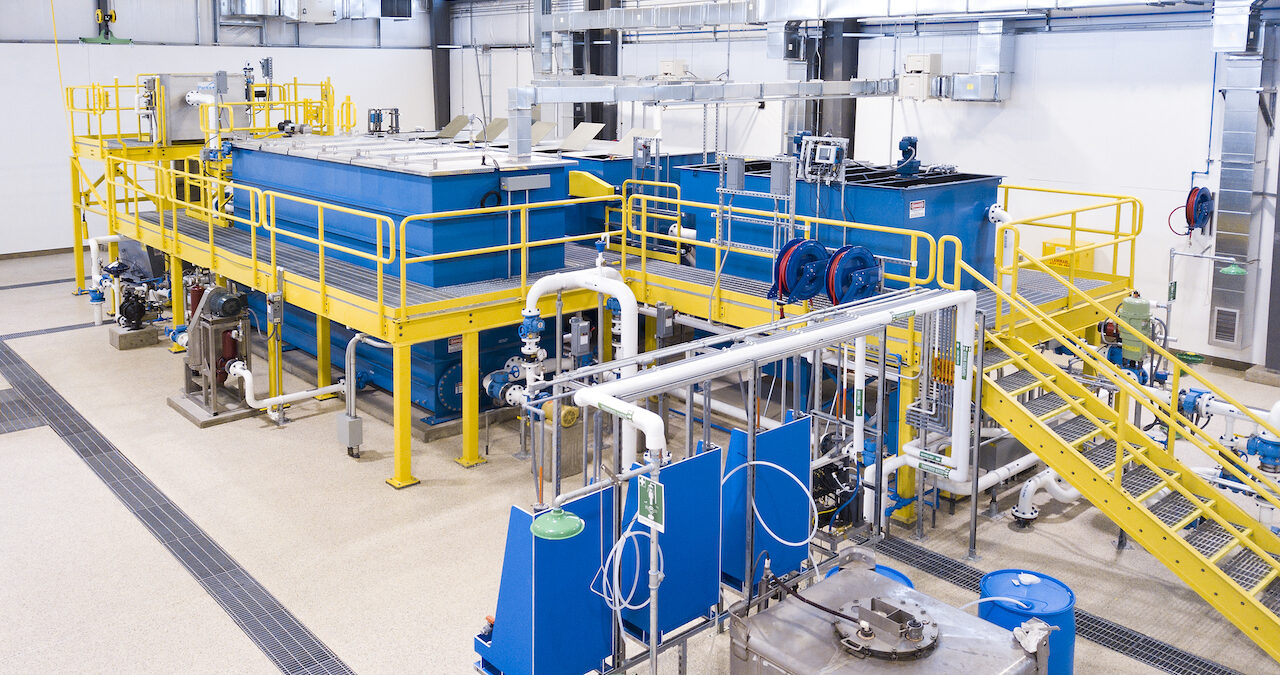Industrial Waste Water Treatment-- Comprehensive Systems for Wastewater Disposal
Industrial Waste Water Treatment-- Comprehensive Systems for Wastewater Disposal
Blog Article
Advancements and Advances in Hazardous Waste Water Treatment Technologies
The landscape of commercial wastewater therapy is undertaking a transformative shift, driven by developments that enhance both performance and sustainability. Emerging technologies, such as membrane layer bioreactors and microbial gas cells, are redefining contaminant elimination processes while adding to power generation. Source recuperation techniques are getting traction, lining up with round economy concepts. As governing standards progress, the combination of AI and maker discovering into wastewater administration systems promises to improve operations and make sure conformity. However, the full effects of these advancements increase critical inquiries concerning their scalability and long-lasting impact on market practices.
Overview of Waste Water Therapy Technologies
Wastewater therapy technologies incorporate a series of approaches created to eliminate impurities from industrial effluents before their release right into the setting. These innovations are essential for keeping eco-friendly balance and guaranteeing compliance with environmental guidelines. The primary categories of wastewater therapy consist of physical, chemical, and organic approaches, each offering distinctive functions based upon the nature of the contaminants existing.

Biological treatment methods utilize bacteria to degrade organic issue, making them especially reliable for organic-rich effluents. Methods like activated sludge and biofilm reactors harness the all-natural degradation capabilities of microorganisms, resulting in substantial reductions in biochemical oxygen demand (BOD)
Advanced Filtering Methods
Advanced filtering techniques stand for a vital development in the realm of industrial wastewater therapy, enhancing the efficiency of impurity removal procedures. Industrial Waste Water Treatment. These methods include a variety of technologies, including microfiltration, ultrafiltration, nanofiltration, and reverse osmosis, which offer consecutive obstacles for different fragment dimensions and chemical frameworks
Microfiltration and ultrafiltration use membrane systems to remove put on hold solids, microorganisms, and bigger natural molecules, improving the quality of effluent before further therapy. Nanofiltration links the gap in between ultrafiltration and turn around osmosis, effectively eliminating natural compounds and divalent ions, hence lowering the load on downstream processes.
Reverse osmosis supplies the highest degree of purification by enabling only water and tiny molecules to pass with its semi-permeable membrane layers, making it excellent for reclaiming high-grade water from industrial effluents. Current innovations in membrane technology, consisting of the development of more fouling-resistant and resilient materials, have substantially boosted operational effectiveness and decreased prices.
Integrating these advanced purification strategies not just enhances the general treatment process yet likewise contributes to sustainability efforts by allowing water reuse and source recovery in industrial settings. (Industrial Waste Water Treatment)
Organic Therapy Innovations

Additionally, the growth of engineered biological systems, such as membrane bioreactors (MBRs), combines biological treatment with sophisticated membrane filtration. This assimilation allows for greater effluent quality and decreased impact, making it ideal for space-constrained commercial centers. Developments in genetically engineered bacteria have also emerged, enhancing the biodegradation of particular impurities, such as pharmaceuticals and heavy metals, that are typically testing to get rid of.
In addition, the implementation i thought about this of bioaugmentation approaches, where helpful microorganisms are introduced to improve the existing biological treatment processes, has actually revealed promising lead to enhancing treatment efficiency. These advancements collectively signify a trend towards more reliable and sustainable biological treatment methods that can adjust to the link progressing complexities of industrial wastewater streams. As markets remain to focus on environmental conformity, these biological advancements will play an important function in wastewater monitoring.

Source Recuperation Methods
In industrial settings, the integration of resource healing approaches has actually ended up being significantly important for improving sustainability and decreasing waste. These techniques focus on extracting important products and power from wastewater streams, thereby changing potential contaminants into reusable sources.
One popular approach is nutrient recuperation, where nitrogen and phosphorus, often existing over in wastewater, are caught and exchanged plant foods. This not just decreases ecological effects however also provides a circular economic situation service for farming applications. Additionally, modern technologies such as anaerobic food digestion enable the conversion of organic waste into biogas, a renewable power source that can offset nonrenewable fuel source use in commercial procedures.
In addition, progressed filtering and membrane layer modern technologies facilitate the healing of commercial spin-offs such as salts and steels. These recuperated materials can be reintegrated into manufacturing procedures, minimizing the demand for virgin resources.
Future Patterns in Drainage Management
As markets significantly focus on sustainability, the future of wastewater management is readied to undergo significant improvements. Technological improvements, such as artificial intelligence and maker understanding, will certainly make it possible for extra efficient surveillance and administration of wastewater systems. These innovations can anticipate maintenance needs, optimize therapy processes, and enhance decision-making, ultimately decreasing operational prices and ecological influence.
Additionally, the integration of round economic situation concepts will play a vital function in wastewater management. Industries are anticipated to shift in the direction of systems that not only treat wastewater however additionally recuperate important sources, such as nutrients, water, and power. This transition will certainly reduce waste and promote the reuse of products, straightening with worldwide sustainability goals.
Arising therapy techniques, such as membrane bioreactors and advanced oxidation processes, will better improve the performance of wastewater therapy, permitting higher quality effluents appropriate for reuse. In addition, regulative structures are likely to develop, highlighting stricter criteria for wastewater discharge and motivating industries to adopt cutting-edge therapy services.
Final Thought
In verdict, the evolution of commercial wastewater therapy innovations shows a considerable change towards improved efficiency and sustainability (Industrial Waste Water Treatment). Developments in sophisticated filtering strategies, biological therapies, and resource recuperation methods highlight the industry's dedication to ecological stewardship.
The landscape of commercial wastewater treatment is undertaking a transformative shift, driven by innovations that improve both performance and sustainability.Wastewater treatment technologies include an array of approaches designed to eliminate pollutants from commercial effluents before their release right into the atmosphere.Harnessing the power of organic procedures has led to substantial technologies in the treatment of industrial wastewater.In addition, the execution of bioaugmentation strategies, where beneficial germs are presented to boost the existing biological treatment procedures, has actually shown encouraging outcomes in improving therapy efficiency. These advancements collectively signify a trend towards more sustainable and reliable organic therapy my explanation methodologies that can adjust to the progressing intricacies of industrial wastewater streams.
Report this page